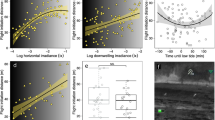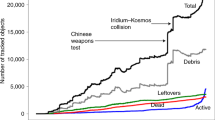Abstract
I AM indebted to the Air Ministry and especially to the civilian staff of the Air-Sea Warfare Development Unit for a copy of the valuable report on “The Optimum Dinghy Colour for Air-Sea Rescue”. Colours were tried from a yellow close to the Schott glass O.G.1, through orange and fire orange, near Schott O.G.2, onwards to traffic red and post-office red, like Schott R.G.1. The overall average visual range of the five coloured M-type dinghies for all-round weather conditions around the British Isles was approximately 1.7 nautical miles (3.15 km.). The waters were mostly greenish, but this is not always so on our coasts.
This is a preview of subscription content, access via your institution
Access options
Subscribe to this journal
Receive 51 print issues and online access
$199.00 per year
only $3.90 per issue
Buy this article
- Purchase on Springer Link
- Instant access to full article PDF
Prices may be subject to local taxes which are calculated during checkout
Similar content being viewed by others
References
Adam, N. K., "Physics and Chemistry of Surfaces", 213 (1941).
Author information
Authors and Affiliations
Rights and permissions
About this article
Cite this article
ATKINS, W. Size Versus Colour in Air-Sea Rescue. Nature 159, 612–613 (1947). https://doi.org/10.1038/159612c0
Issue Date:
DOI: https://doi.org/10.1038/159612c0
Comments
By submitting a comment you agree to abide by our Terms and Community Guidelines. If you find something abusive or that does not comply with our terms or guidelines please flag it as inappropriate.



